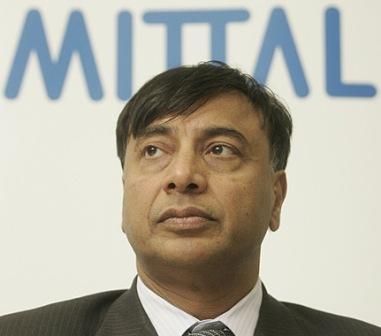Factually, Mittal didn’t wind up this week, tactfully retaining his toehold in Jharkhand and Karnataka. He’d done the “exit” 3-4 years back! POSCO, no doubt , is a far more serious player in India’s steel story; but even they never had the wherewithal to invest in both Odisha and Karnataka. The latter was only a hedging exercise.
Lakshmi Mittal, the embattled brown-field steel magnet has announced a pull out from Orissa. Good for him. Salaries saved on his India employees may salvage the sale of his 12-bedroom hamlet in Central London.
But trust our financial media to flash Arcelor-Mittal’s exit as a setback to the India Story.
Till yesterday, the headline was: Arvind Mayaram’s “big bang” on foreign direct investment (FDI)! Today, it’s Mittal read with the exit of POSCO.
I won’t shed a tear for Mittal. My own information is that he never put enough boots on the ground to erect a green-filed plant in Odisha. The goal always was coal blocks in Jharkhand. Which serious company would have a common CEO, Vijay Bhatnagar, for India and China? Arcelor-Mittal did. The man was transplanted from the Mittal operation in Poland; but at no point of time equipped with men and capital. The only way the steel plant would have come was if large tracts of land came on a platter, riding on Mittal’s mega-star status.
That never happened. First, because Mittal has no track-record or experience of setting up green-field ventures. Second, our land laws, particularly those in the tribal belts leave little elbow room for private players.
So, my two cents is that Mittal didn’t wind up this week (tactfully retaining his toehold in Jharkhand and Karnataka). He’d done this 3-4 years back!
Reporters can confirm this impression by visiting a Mittal office in Odisha or one in Ranchi and New Delhi.
My sense therefore is that Mittal timed his exit in Odisha with POSCO, the Korean steel major, announcing “quits” with Karnataka, and the financial media bought the story lock stock and barrel.
Finally, a quick word on POSCO. They are no doubt a far more serious player in India’s steel story; but without the wherewithal to invest in both Odisha and Karnataka. The latter was only a hedging exercise. Its purpose was served the moment Odhisha fell in line.
“Context” therefore is the missing word in government’s briefings to the politico-financial media. In its absence, breast beating follows on the social media, including cursing Prime Minister and his colleagues in the cabinet for delivering a dud slate of FDI reforms!
The truth is that globally steel majors are in the dumps. importance of steel is in no doubt. The Economist had a brilliant essay on this earlier this month, which deserves to be credited in some length.
“A French minister recently threatened to nationalise ArcelorMittal’s Florange plant if it pursued plans to cut jobs and close two blast furnaces. Steelmaking scrapes by on microscopic margins that make even airlines look like paragons of profitability. This is most apparent in Europe, whose steelmakers are the most beleaguered. Yet China, where the industry is booming—it has enjoyed almost all of the global production growth in the past decade—faces many of the same problems.”
The most pressing concern in the steel world is an old one: overcapacity. In Europe especially, the drive to build lots of vast steelworks in the post-war reconstruction effort continued into the booming 1960s, only for demand to hit a wall in the oil shocks of the 1970s. Too little was done to adjust capacity to the meagre growth rates that followed. The financial crisis delivered the latest blow. Around half of steel output is used in construction, an industry that took a heavy battering. Steel consumption in Europe, at around 145m tonnes in 2012, is nearly 30 per cent below its pre-crisis level and demand is still falling.
A declining domestic market is far from Europe’s only ill. Labour costs are sky-high (only Japan’s are greater). Feisty unions and fussy governments make closing steel plants a difficult, expensive and lengthy process. And energy, two-fifths of steelmakers’ operating costs, is pricey. An Austria’s biggest steelmaker, reckons that the continent’s unused capacity is 50m tonnes.
American steelmakers, though they are struggling to compete with Latin American rivals, have it a bit better. Signs that the economy is recovering, cheap energy from shale gas and a resurgent motor industry are all bringing good cheer to steel firms. Jefferies, a bank, reckons America’s steel consumption will grow by 2.8% this year.
In Europe, despite some efforts to manage capacity by idling facilities, there is little chance of the big closures required. No firm wants to be first to shut plants and let competitors reap the benefit. And deals struck when times were good still haunt steelmakers. ArcelorMittal, which became the world’s biggest steelmaker in a huge merger in 2006, agreed to maintain jobs and production to persuade European governments to wave the deal through. Now it will be a struggle to break these promises.
Adding to the pressure on steelmakers’ profitability is China’s growing capacity, which is denting steel prices around the world. After a decade of rapid expansion, Chinese firms are now responsible for half of global production. Although the government seems determined to cover the entire country with steel and concrete in its drive for growth, the steelmakers have expanded so rapidly that they now suffer from massive overcapacity. Yet more is being added: Jefferies reckons that another 105m tonnes of new capacity is under construction or planned.
China’s stated aim of reining back steelmakers and consolidating state-run firms has happened “mostly on paper”, according to Philipp Englin of World Steel Dynamics, a consultancy. The central government wants cheap steel, so it is unwilling to take radical steps to curtail overcapacity. Meanwhile local governments are encouraging more steel mills to set up shop. They are a vital source of direct and indirect employment, and tax revenues. To these enterprises, profits are unimportant.
China’s continuing economic growth offers the prospect of its excess capacity eventually being used up, if the central government can somehow restrain local authorities’ zeal for new plants. Europe’s outlook is gloomier. Its firms face an unwelcome choice between abrupt closures and death by a thousand cuts. Although the world still needs plenty of steel it doesn’t need as much as steelmakers are able to supply."
On our own part, land acquisition continues to be hostage of the antiquated 1894 law that has led to bitter conflicts and confrontations over the years. Rather than worry about a MIttal or a POSCO hedging between Odisha and Karnataka, our focus should be democratization of the land acquisition process long overdue. It is therefore important to test the proposed provisions contained in the Land Acquisition, Rehabilitation and Resettlement Bill, 2011 (LARR Bill) on Social Impact Assessment, their evaluation by an independent expert group, the integration of rehabilitation and resettlement (R&R) into the land acquisition process, the way “public purpose” has been defined including the prior informed consent of at least 80 per cent of the land owners mandatory (not those who are landless though!) and the provision that informed consent would not apply to a whole range of projects in the public sector involving those meant for strategic purposes, for railways, highways, ports, power and irrigation projects, or for government projects in the fields of education, agriculture, health, urban and rural housing etc. All need debate. So does the concept of price discovery for compensation is a highly opaque land registry process.
Alas, we hardly talk of that or whether provisions that a job must be given to at least one person in each affected family or an annuity of at least Rs 2,000 per family for 20 years (inflation indexed) or a one-time payment of Rs 5 lakhs per family as a rehabilitation entitlement is sustainable from a generational perspective.
We only focus on Mittal, the dubious star, POSCO, an outright posturer, and government, a desperado for a silver bullet, when the answer lies in modernizing India’s land market.

